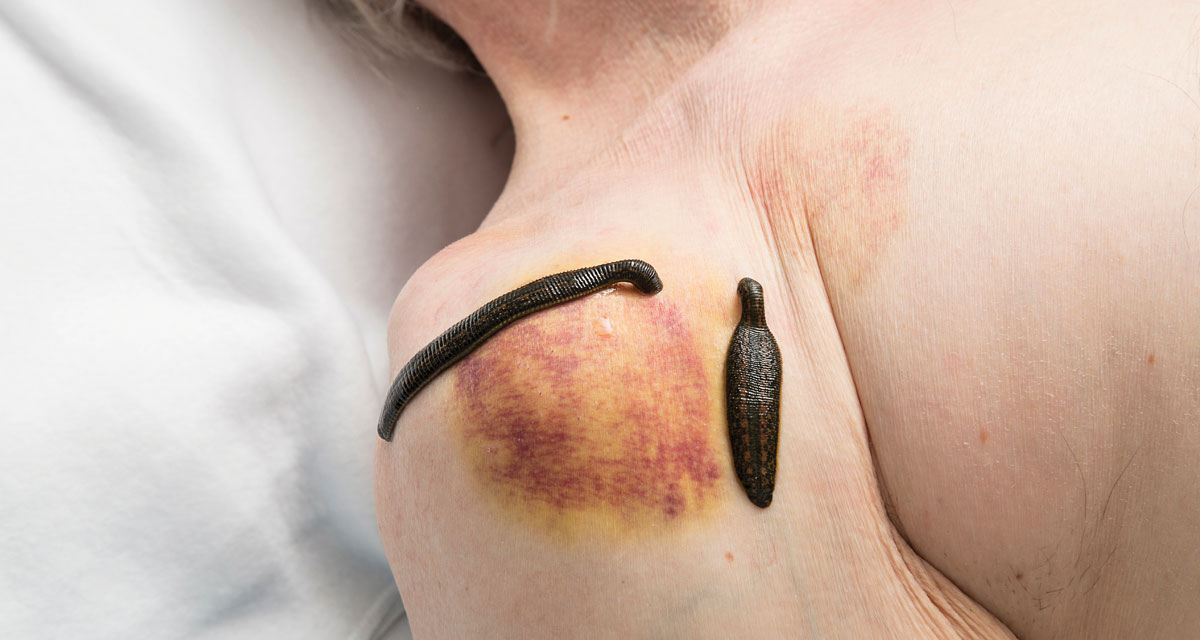Medicine in the 21st century has brought us things like robots that help perform surgeries and maybe too many medicines for us to wrap our heads around. However, back in the day, medicinal treatments were often not very helpful and sometimes downright terrifying. Here are some that you won’t believe were ever considered to be acceptable treatments.
Bloodletting
First Century Roman Physician Galen believed that blood, as the strongest of the four humors, had a powerful influence on health. His theory was that blood could become stagnate in the extremities of the body and, therefore, cause disease. Based on this idea, surgeons “bled” patients to remove the stagnant blood and restore the balance of the humors. This treatment was recommended for all kinds of ailments from headaches and indigestion to pneumonia and strokes.
Leeches were key to the bloodletting process, and through the ages, have been used as a treatment for infection, skin diseases, dental afflictions, among many other conditions. Maybe their most miraculous attribute has kept them relevant in today’s medicine – leeches secrete specific peptides and proteins that increase wound blood flow, by preventing clotting. Leech therapy can help treat everything from cancer, arthritis, hemorrhoids and high blood pressure to heart disease.
Anesthesia
In today’s world, no one would choose to be operated on in dirty, germ-infested conditions…and especially not without adequate pain relief. However, before the mid-19th century, which ushered in major advances in anesthesia and antiseptic methods, the reality for anyone needing a surgical procedure was grim. The first successful public medical demonstration of anesthesia occurred when Dentist William Morton used ether gas in October of 1846 and that began the era of modern anesthesia. Ether gave way to chloroform as the favored drug, but it had dangerous, sometimes fatal side effects. Later anesthesia drugs included ethylene, halothane, sevoflurane (all gases) and later intravenous agents such as the barbiturate sodium thiopental and propofol. Our expectations of medicine have been shaped by the advances of anesthesia. Before the 19th century, 80% of patients died after having operations. Today, that number is estimated to be anywhere from 1-3% depending on a variety of factors.
Trepanning
When you have a migraine, do you ever feel like a nice hole in the head would help? Many of our historic ancestors believed that drilling an opening into the skull was a reasonable way to treat pain and neurological issues. The earliest indications of trepanation date back 7,000 years ago, particularly in Greece, Africa, Polynesia and even America, but the shocking practice remained into the early 1900s. With zero anesthesia, this made for a particularly painful, and sometimes, life-threatening procedure. However, the survival rate of these operations was surprisingly high.
Poo Ointment
It’s exactly what it sounds like – in ancient Egyptian times, the use of animal excrement for healing was recorded in the Eber’s Papyrus. Dating back to 1500 B.C., a range of feces, from dog and gazelle to donkey, could be used to not only treat wounds but to keep bad spirits away, as well. Some women would place crocodile dung into their vaginas, believing it could serve as a contraceptive. I imagine it did!
Mercury
Mercury is infamous for its toxic properties, but it was once used as a common potion and topical medicine. The ancient Persians and Greeks considered it a useful ointment, and second-century Chinese alchemists valued liquid mercury, or “quicksilver,” and red mercury sulfide for their supposed ability to increase lifespan and vitality. Some healers even swore that by consuming brews containing poisonous mercury, sulfur and arsenic, their patients would gain eternal life. One of the most famous casualties of this diet was the Chinese Emperor Qin Shi Huang, who supposedly died after ingesting mercury pills designed to make him immortal.
Cocaine For What Ails You
Sigmund Freud is respected for his contributions to psychology. He’s less celebrated for regularly prescribing cocaine to his patients. Not that he was alone. Many 19th century doctors championed the use of cocaine to treat a range of ailments, from depression and migraines to toothaches.























